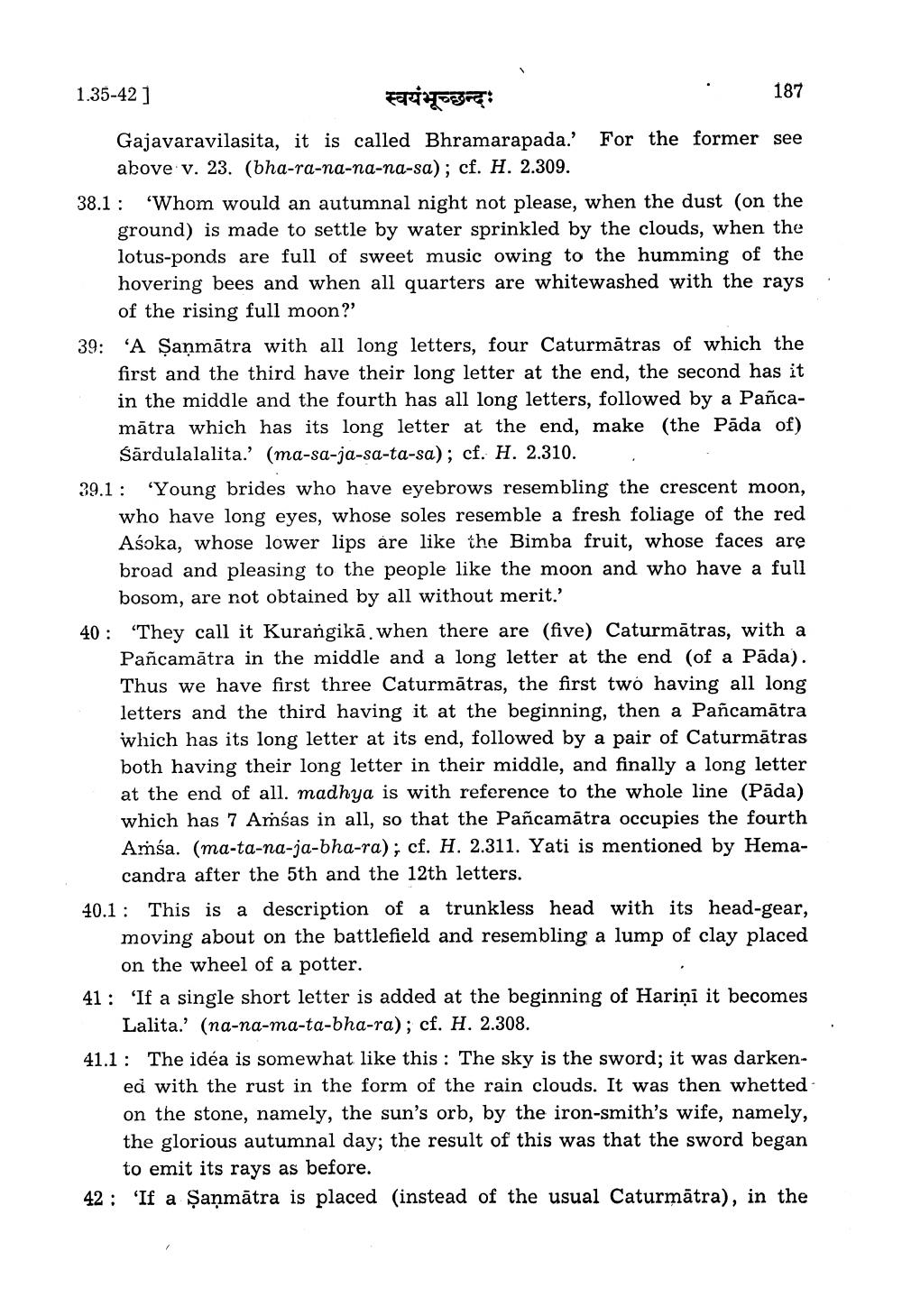________________
1.35-42) स्वयंभूच्छन्दः
. 187 Gajavaravilasita, it is called Bhramarapada.' For the former see
above v. 23. (bha-ra-na-na-na-sa); cf. H. 2.309. 38.1: 'Whom would an autumnal night not please, when the dust (on the
ground) is made to settle by water sprinkled by the clouds, when the lotus-ponds are full of sweet music owing to the humming of the hovering bees and when all quarters are whitewashed with the rays.
of the rising full moon?' 39: 'A Şanmātra with all long letters, four Caturmātras of which the
first and the third have their long letter at the end, the second has it in the middle and the fourth has all long letters, followed by a Pañcamātra which has its long letter at the end, make (the Pāda of)
Śārdulalalita.' (ma-sa-ja-sa-ta-sa); cf. H. 2.310. 39.1: 'Young brides who have eyebrows resembling the crescent moon,
who have long eyes, whose soles resemble a fresh foliage of the red Asoka, whose lower lips are like the Bimba fruit, whose faces are broad and pleasing to the people like the moon and who have a full
bosom, are not obtained by all without merit.' 40: "They call it Kurangikā. when there are (five) Caturmātras, with a
Pañcamātra in the middle and a long letter at the end of a Pāda). Thus we have first three Caturmātras, the first two having all long letters and the third having it at the beginning, then a Pañcamātra which has its long letter at its end, followed by a pair of Caturmātras both having their long letter in their middle, and finally a long letter at the end of all. madhya is with reference to the whole line (Pāda) which has 7 Añías in all, so that the Pañcamātra occupies the fourth Amsa. (ma-ta-na-ja-bha-ra); cf. H. 2.311. Yati is mentioned by Hema
candra after the 5th and the 12th letters. 40.1 : This is a description of a trunkless head with its head-gear,
moving about on the battlefield and resembling a lump of clay placed
on the wheel of a potter. 41 : 'If a single short letter is added at the beginning of Harini it becomes
Lalita.' (na-na-ma-ta-bha-ra); cf. H. 2.308. 41.1: The idea is somewhat like this: The sky is the sword; it was darken
ed with the rust in the form of the rain clouds. It was then whettedon the stone, namely, the sun's orb, by the iron-smith's wife, namely, the glorious autumnal day; the result of this was that the sword began
to emit its rays as before. 42: 'If a Sanmātra is placed instead of the usual Caturmätra), in the




